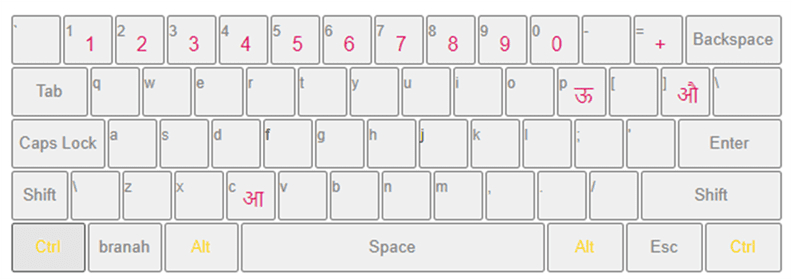
Nepali is written in Devanagari script, a descendant of the Brahmi script. The Nepali writing system is thus an abugida. The term, abugida, is taken from the four CV units in the script, "ʾä bu gi da" - four consonants and the first four vowels of the script, in a similar way the term, abecedarium, is derived from the Latin alphabets "ā bē cē dē."Ībugida is also referred to as alphasyllabary. Daniels, from the Ethiopian word for the Ge'ez script, an example of such writing system, and in which Ethiopian is written.

This type of writing system consisting of aspects of both alphabetic writing systems and syllabic writing systems has been termed as abugida, a term proposed by Peter T. However, in the Nepali writing system, the syllables का /ka/, कि /ki/, के /ke/ are written in a regular way that includes the common graphic aspect, the /k/ consonant.

For example, in Japanese katakana, syllables カ /ka/, キ /ki/, ク /ku/ are not written in a way that includes a common graphic aspect to indicate their common /k/ consonant. In syllabic writing systems, there is no regular way or a set pattern on which such syllables are written. In the Nepali writing system, the syllable /ki/ is not written with one distinct symbol, but with two symbols, "क" /k/ and "ि" /i/.Īnother distinction is the manner in which syllables starting with the same consonant are written. In a syllabic writing system, each syllable is typically represented by one symbol, e.g., the Japanese katakana symbol "キ" /ki/ is written with one symbol but represents a syllable containing the consonant /k/ and vowel /i/. However, some aspects of the syllabic writing system are not present in the Nepali writing system. The Nepali writing system also has a feature of the syllabic writing system in that its effective unit is a syllable. In addition, the inherent vowel /a/ is not written at all. However, all vowels cannot be written independently, which does not make it a true alphabetic writing system. Similar to the alphabetic writing systems, it consists of consonants and vowels. These characteristics make the Nepali writing system a cross between syllabic writing systems and alphabetic writing systems. A dependent vowel sign is used to represent a V in CV units where V is not the inherent vowel. Independent vowel letters also constitute a CV unit, where the C is considered to be null. Consonant letters by themselves constitute a CV unit, where the V is an inherent vowel. The orthographic syllable is built up of alphabetic pieces consisting of three distinct character types: consonant letters, independent vowel letters, and dependent vowel signs.

The Nepali writing systemThe effective unit or the smallest unit of the Nepali writing system is a syllable consisting of a consonant and vowel (CV) core, and optionally, one or more preceding consonants. Characters used in the Nepali writing system.


 0 kommentar(er)
0 kommentar(er)
